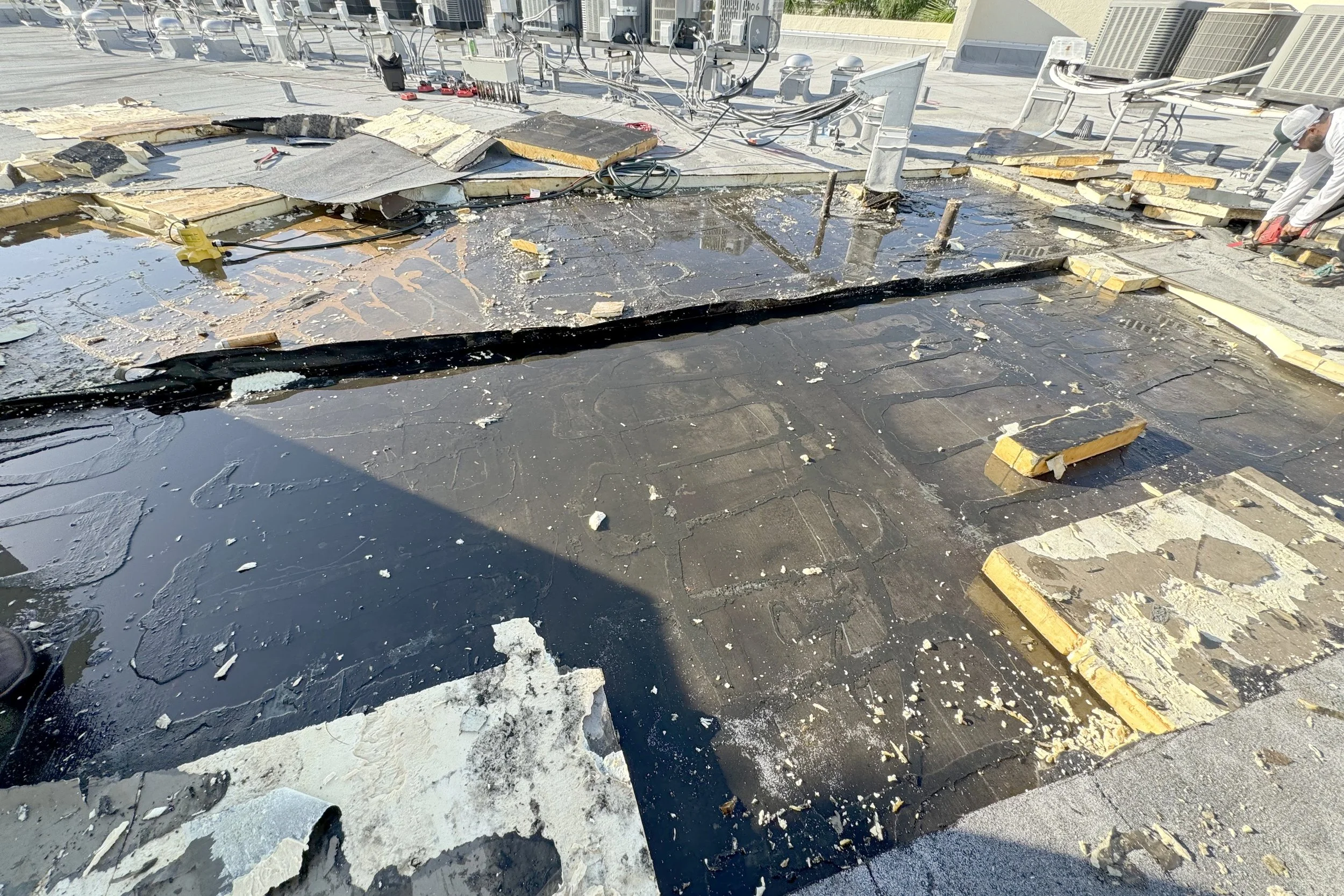TECHNICAL KNOWLEDGE.
Understanding Roof Insulation and Drainage on Flat Roof Systems
Flat roofs are common across Central Florida’s commercial and multi-family communities, valued for their modern look and efficient use of space. However, a flat roof is never truly flat — it’s a carefully engineered system designed to insulate the building and direct water off the surface efficiently. When insulation or drainage is compromised, even the best roof membrane will fail prematurely.
At Phoenix Roofing Services, we specialize in diagnosing and correcting these issues through proper insulation design, tapered slope systems, and high-performance waterproofing solutions.
Why Insulation Matters
Insulation is more than just an energy-efficiency feature—it’s a structural component that supports the roof membrane and controls thermal movement. Proper insulation helps:
Prevent heat transfer that can damage the roof and reduce indoor comfort.
Support the membrane evenly to prevent cracking or splitting.
Promote consistent slope for water drainage.
When insulation becomes saturated with water, it loses strength, traps heat, and adds unnecessary weight to the roof structure. Moisture intrusion also creates a breeding ground for mold and corrosion — especially on older modified bitumen or TPO systems.
Phoenix Roofing Services performs moisture mapping and core sampling to determine whether insulation is still viable or requires replacement.
The Role of Drainage
The single most common cause of premature flat roof failure is poor drainage. Even a 1-inch depression can hold gallons of standing water, known as “ponding.” Over time, ponding water breaks down adhesives, accelerates UV damage, and increases the likelihood of leaks.
Proper drainage depends on:
Slope Design: Tapered insulation systems guide water toward drains or scuppers.
Clear Drainage Pathways: Debris, clogged drains, or misaligned scuppers can prevent proper flow.
Surface Condition: Low areas caused by structural deflection or wet insulation may need reconstruction.
Our repair approach focuses on rebuilding slope and restoring drainage, not just patching leaks. This ensures lasting performance and reduces maintenance costs over the life of the system.
Our Process
When a roof exhibits signs of standing water, soft spots, or heat blistering, our team follows a systematic process:
Inspection & Diagnostics – We assess slope, moisture content, and insulation integrity.
Removal of Saturated Materials – Wet insulation is removed to prevent future decay.
Installation of Tapered Insulation – Custom-designed slopes promote efficient drainage.
Reinstallation of the Roof System – Using Polyglass Polyfresko, TPO, or liquid-applied coatings for durable, watertight protection.
Permitting and Insurance Recognition
All insulation and drainage restoration projects performed by Phoenix Roofing Services are permitted and inspected under Florida Building Code. Because these are considered roof replacements, most insurance companies recognize the roof as new — resetting its age and restoring coverage eligibility.
Long-Term Benefits
By addressing insulation and drainage holistically, you:
Extend roof life and reduce long-term maintenance.
Eliminate chronic leak points and ponding.
Improve energy efficiency and comfort.
Protect manufacturer warranty coverage, insurance coverage and property value.
Protecting Communities Across Central Florida
From Orange, Seminole, Lake, Osceola and surrounding Counties, Phoenix Roofing Services provides roof restoration solutions that combine structural integrity, waterproofing excellence, and long-term performance.
If your flat roof shows signs of standing water or insulation damage, contact our team to schedule a professional inspection.




